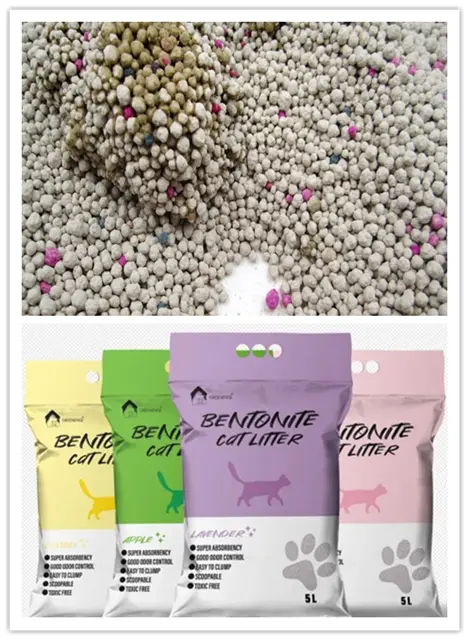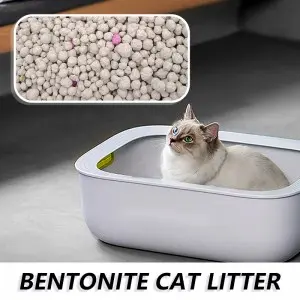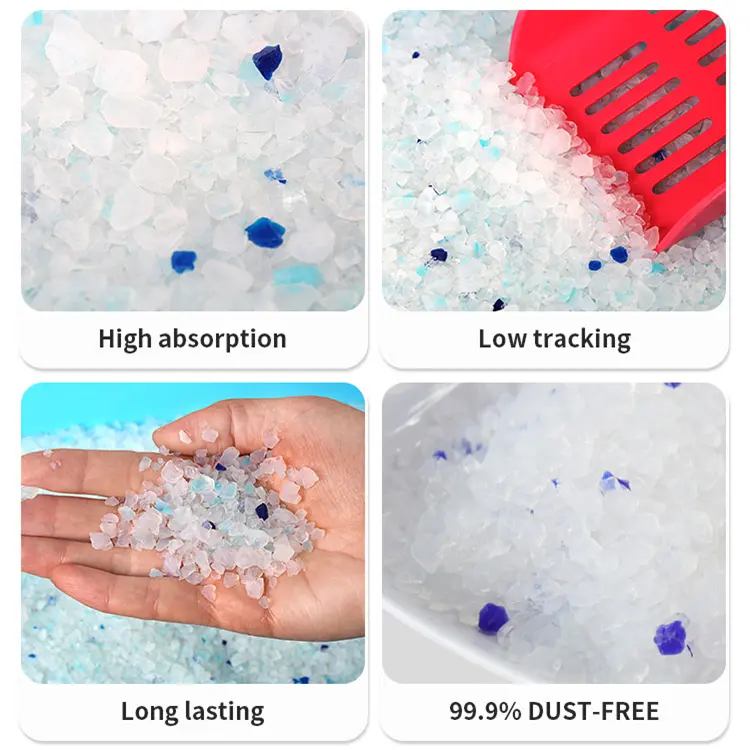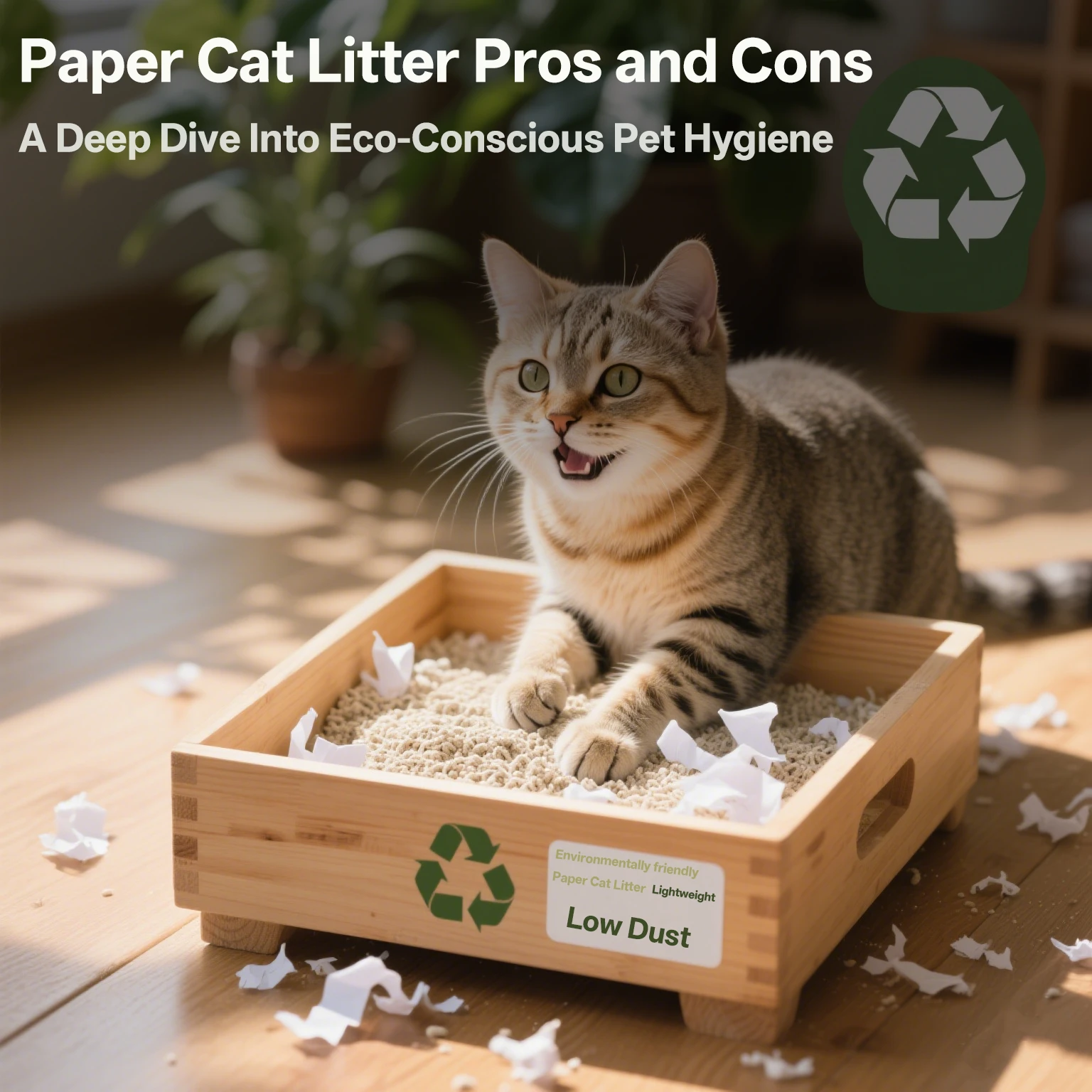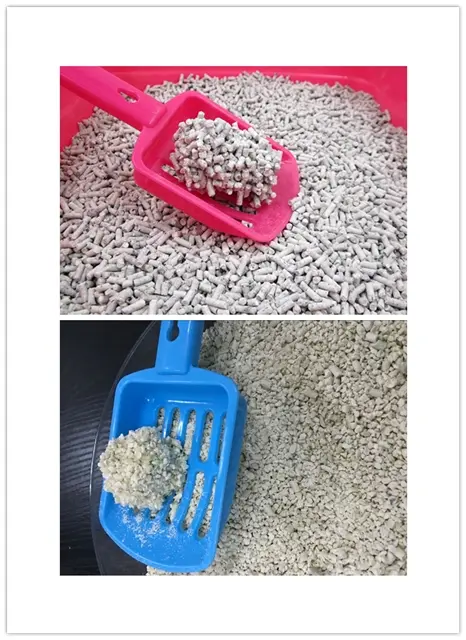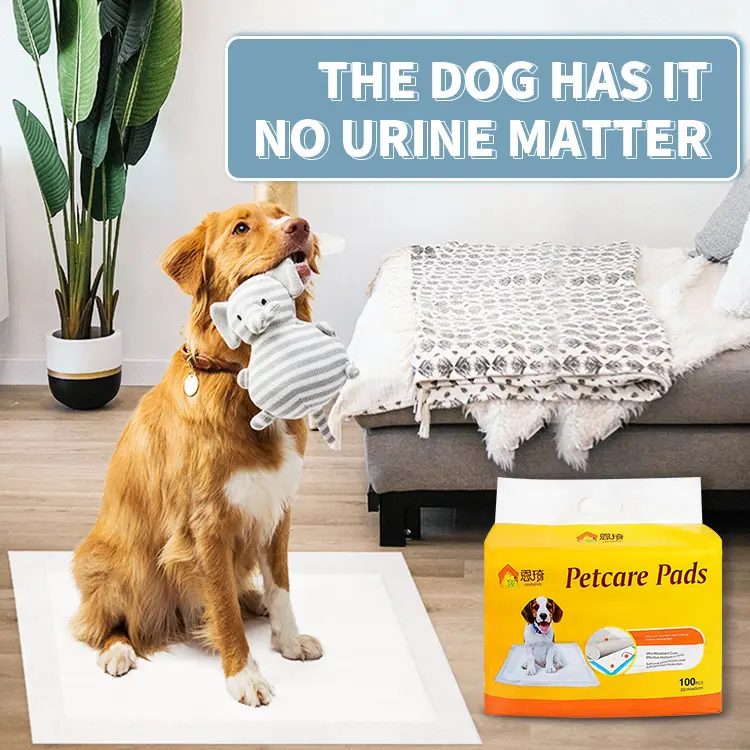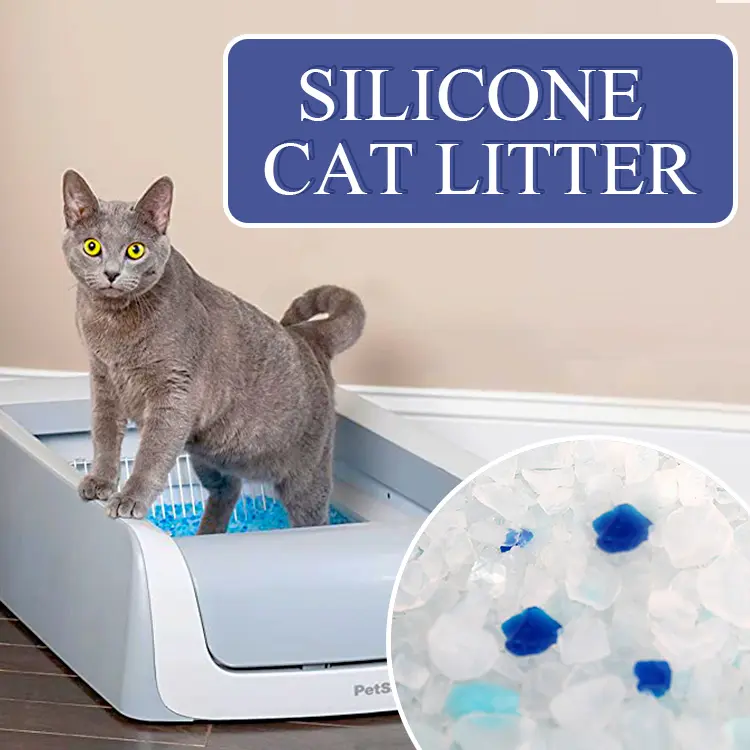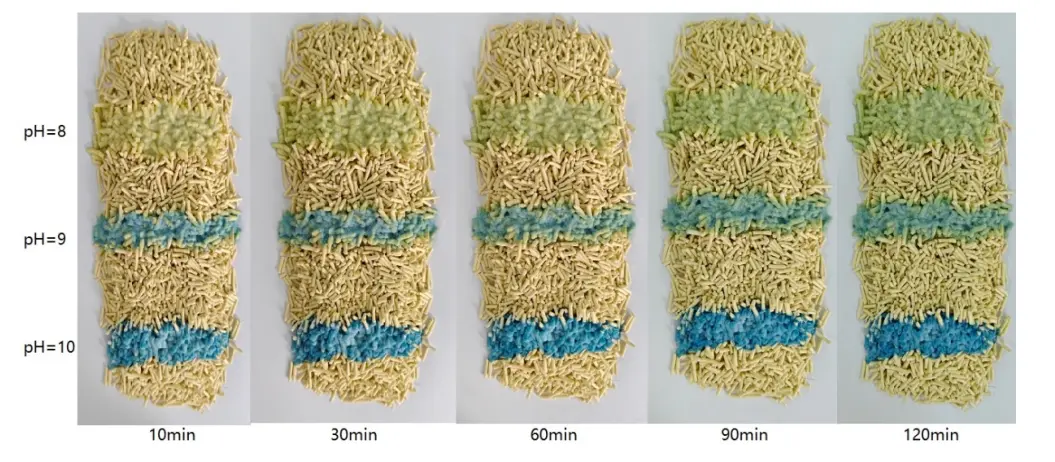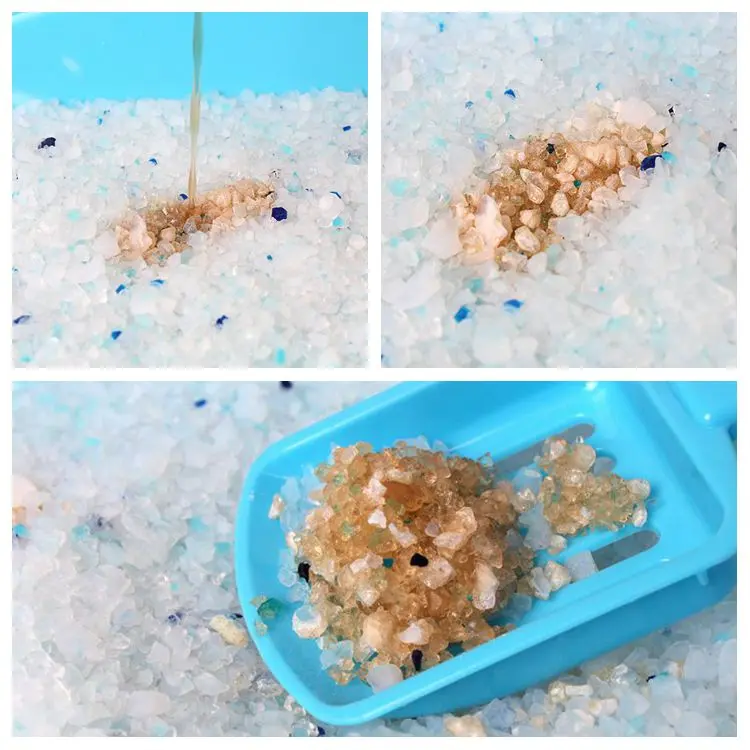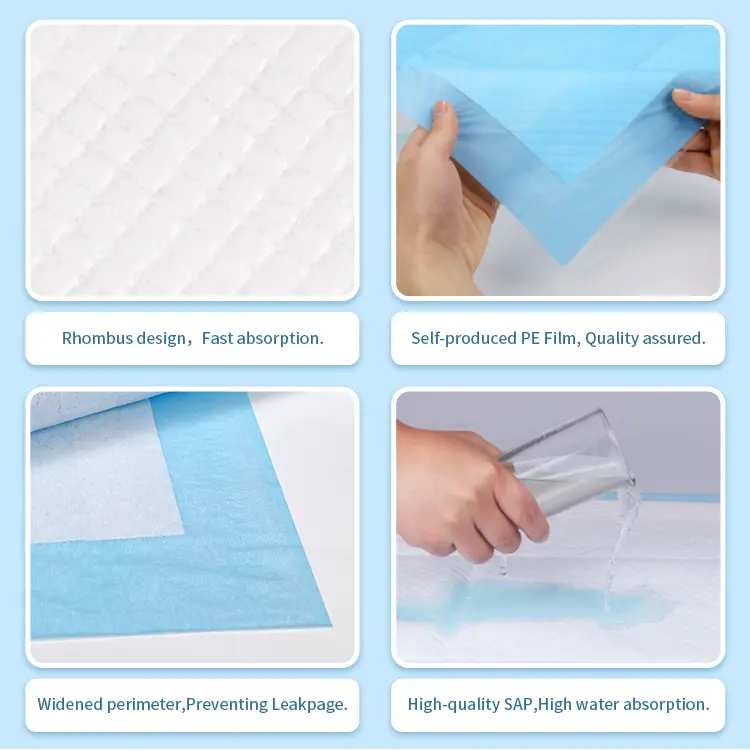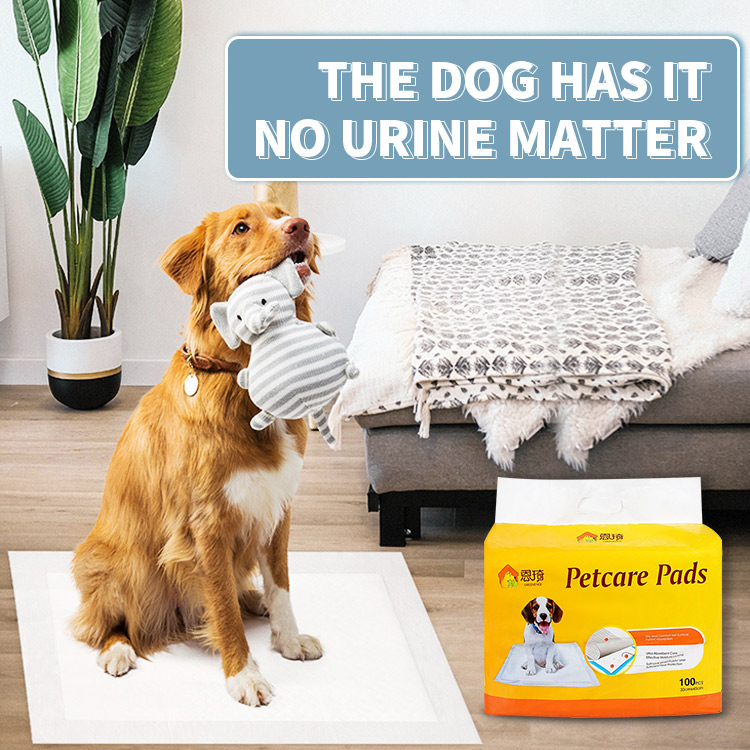The production process of bentonite cat litter mainly includes the following steps:

1. Raw material preparation
Raw material mining:
The main raw material of bentonite cat litter is bentonite, which is a non-metallic mineral with montmorillonite
as the main mineral component. The mining of raw materials requires the use of down-the-hole drills, excavators and other equipment to ensure
the purity and quality of the raw materials.
Raw material mixing:
During the raw material preparation stage, it may be necessary to mix bentonite powder with other
additives (such as deodorants, spices, etc.) and adhesives to improve the performance and comfort of cat litter. This step is
usually carried out in a mixer, and the speed and mixing time of the mixer need to be controlled to ensure that the raw materials are fully mixed and evenly mixed.
2. Crushing and screening
Crushing:
The mined bentonite ore is crushed, and equipment such as jaw crushers and impact crushers can be used.
The purpose of crushing is to crush the ore into appropriate particle sizes for subsequent processing and treatment.
Screening:
The crushed bentonite ore needs to be screened to remove oversized particles and impurities. Screening can use equipment
such as vibrating screens, and different screen apertures can be set as needed to obtain cat litters of different particle sizes.
3. Granulation and Forming
Granulation:
The sieved bentonite particles are sent to the granulator for granulation. The purpose of granulation is to process the bentonite particles
into the required cat litter particle shape, such as spheres, strips, etc. The selection and operation parameters of the granulator need to be
adjusted according to the shape and quality requirements of the cat litter.
Forming:
In some production processes, the cat litter particles after granulation may need further forming to obtain a more
regular particle shape and better physical properties.
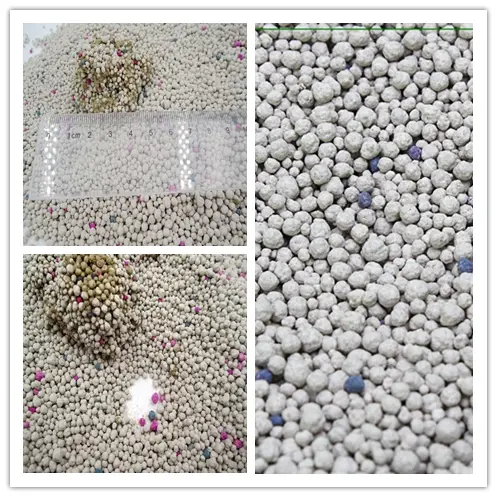
4. Drying and Drying
Drying:
The cat litter particles after granulation or forming need to be dried to remove moisture and moisture from the particles. Drying can be done by
natural drying or microwave heating drying. Natural drying requires sufficient space and time, while microwave heating drying can remove
moisture faster and improve production efficiency.
Drying:
During the drying process, the cat litter particles also need to be dried to ensure that their moisture content meets the requirements.
The drying temperature and time need to be adjusted according to the material and thickness of the cat litter to avoid excessive drying or
insufficient drying resulting in a decrease in the quality of the cat litter.
5. Screening and packaging
Screening:
The dried cat litter particles need to be screened to remove oversized particles, impurities and broken particles. Screening can use
equipment such as sieving machines, and different screen apertures can be set as needed to obtain cat litter products that meet the requirements.
Packaging:
The screened cat litter products need to be packaged for storage, transportation and sales. Packaging materials can be plastic bags,
cartons, etc., and different packaging specifications and quantities can be set as needed. During the packaging process, it is also necessary to pay
attention to avoid damage and contamination of cat litter particles.
6. Environmental protection and safety
Environmental protection devices:
In the production process of cat litter, environmental protection devices such as dust collectors, sealing covers,
and sealed conveyor belts need to be configured to reduce the impact of dust pollution and noise pollution on the environment and employees.
Safety measures:
In the production process of cat litter, a series of safety measures need to be taken, such as setting safety warning signs and
providing personal protective equipment, to ensure the personal safety and health of employees.
In summary, the production process of cat litter soil sand needs to go through multiple steps such as raw material preparation, crushing
and screening, granulation and molding, drying and drying, screening and packaging, and environmental protection and safety. Each step
requires strict control of process parameters and product quality to ensure that the final cat litter product has excellent performance and quality.
